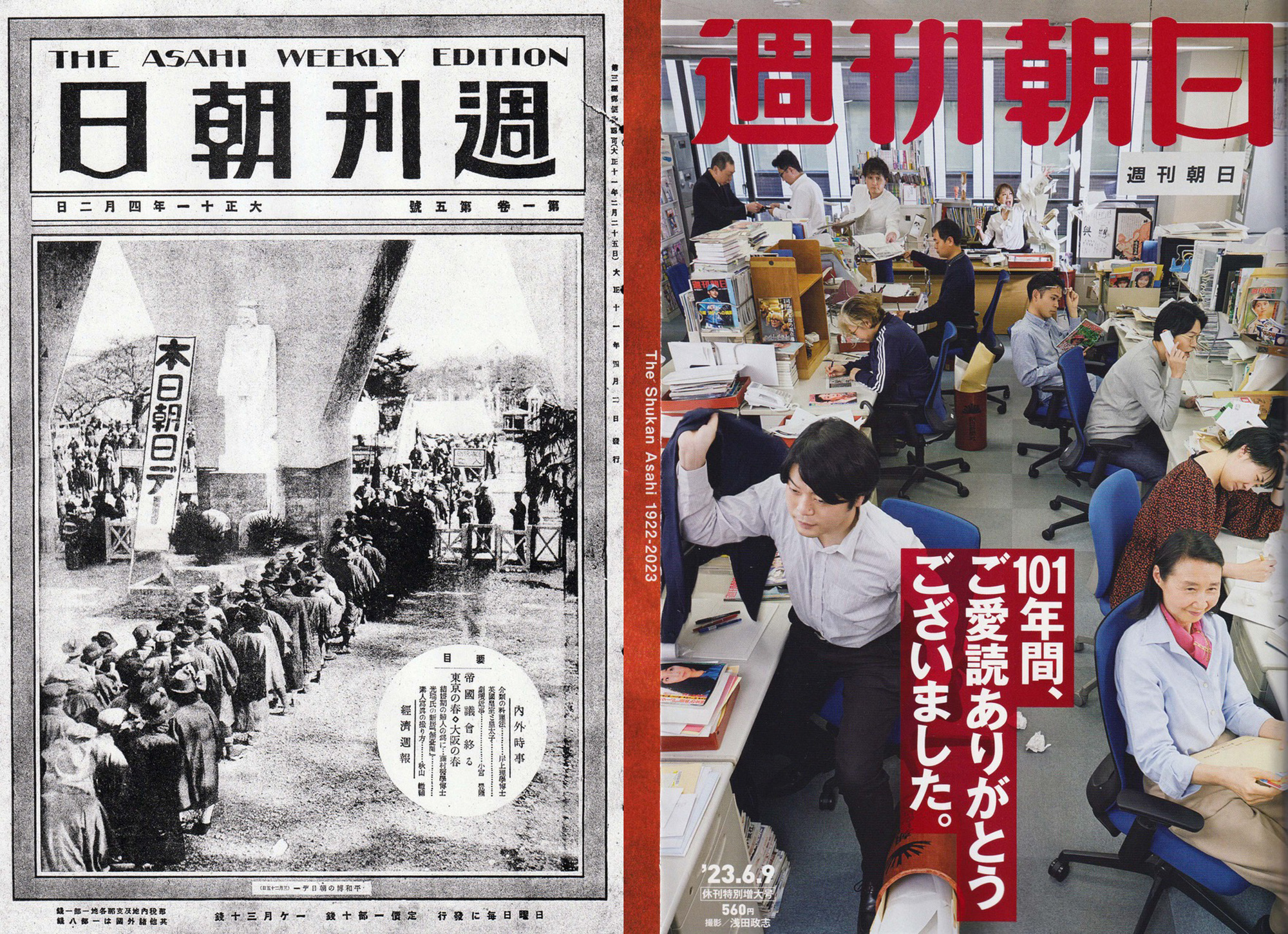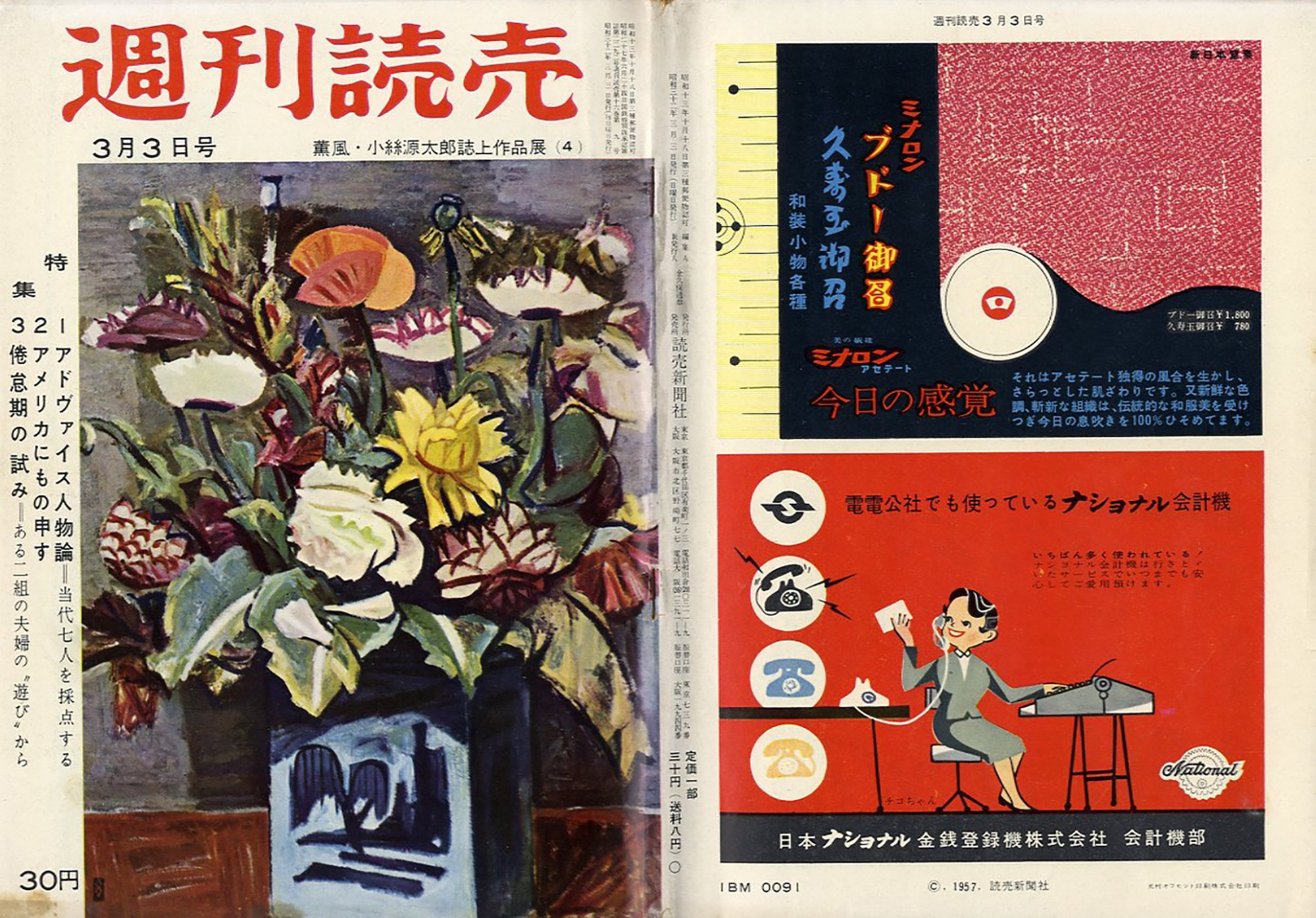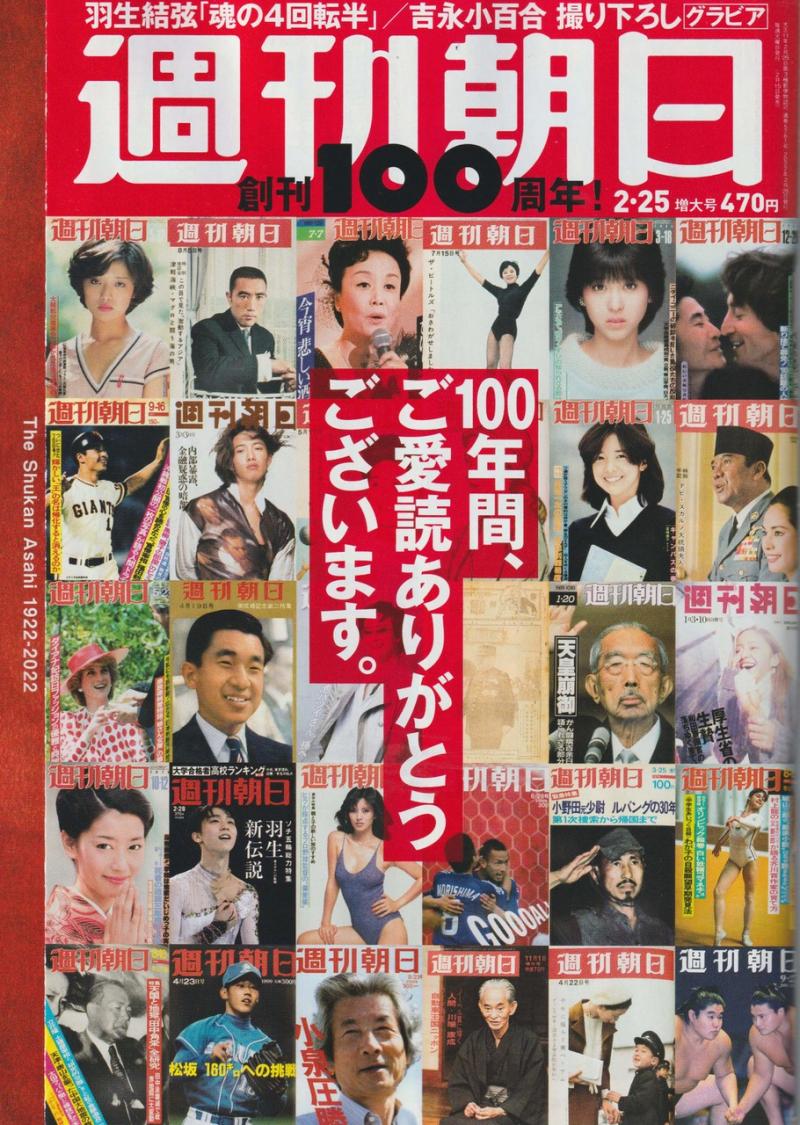Issue:
July 2023
Shukan Asahi’s closure bodes ill for Japan’s once-vibrant weekly magazine market

The spring of 2022 was Shukan Asahi's moment to bask in the limelight. Japan’s first weekly magazine was launched on April 2, 1922, the same day as its rival weekly, Sunday Mainichi.
Over the century that followed, Shukan Asahi weathered economic depression, militarism and wartime devastation to emerge stronger than ever, selling well over 1 million copies a week by the 1960s.
While no longer considered top dog among its peers, it was still acknowledged and respected by Japan's magazine cognoscenti, and throughout 2022, the words "100th anniversary" were prominently displayed beside the logo on its covers.
In the magazine's February 25, 2022 special anniversary issue, its editor, Kaoru Watanabe, wrote: “With thanks to the support of readers, this marks our 5,761st issue. The major incidents and events we reported on our pages reflect Japan's past century: disasters, war, recovery, prosperity, maturity and onward to where we are headed in the future ….”
Shukan Asahi, Watanabe pledged, "will continue its run while ticking out the 'now.' I hope you'll continue to read our magazine for many years to come".
Behind the scenes, however, this celebratory air was tainted by the realization that barring a miraculous rescue, the publication was doomed.
On January 19 this year, Shukan Asahi's publisher, Asahi Shimbun Publications Inc., issued an announcement that shook Japan's print media world.
After 101 years and two months of publishing, Shukan Asahi will cease publication at the end of May 2023.
Launched in 1922, Shukan Asahi is Japan's oldest general weekly magazine and has enjoyed the patronage of its readers for more than 100 years. We would like to express our sincere gratitude for your support over the past 100 years.
The average circulation of Shukan Asahi in December 2022 was 74,125 copies. While our business performance is solid, we have made the decision to focus more on our web-based news site AERA.dot and our book division as the weekly magazine market's circulation and advertising expenses shrink. Our other weekly magazine, AERA, will strengthen its branding by strengthening its ties with AERA.dot.
We would like to thank you for your support of our publications and media.

A nostalgic parting
What followed over the next four months could be described as a long goodbye.
The reaction to the magazine's closure among the various media, in print, online and on television - with few exceptions – has been uniformly gracious. One of the first to lend his voice was Yoshimitsu Jokura, editor of rival magazine Sunday Mainichi, who admitted to feeling a sense of "Shukan Asahi loss."
Commentary from some former Asahi insiders, however, has been less complimentary. In an article dated January 23 on the web site of news weekly Shukan Kinyobi, veteran journalist Masakazu Honda asked: "Why Was Shukan Asahi forced to suspend publication?"
Honda pulled no punches in recalling his four years as a member of the Asahi’s editorial department from the fall of 1987.
"As soon as I arrived [to work there], I was told by a nasty staffer on the desk: 'Hey, Honda. You leftists from the editorial bureau seem to think that you are journalists, but as soon as we present our business cards from a weekly magazine, we get doused with water, spat upon, and called 'bunya shits' for the coverage we did.'"
Honda continued: "We were ordered to 'put aside our lowly pride' and cover only sports and entertainment news, which we hated. It is true that a fugitive from the editorial bureau like myself was rebuffed and even discriminated against by the freshmen in the publishing bureau, but the atmosphere at Shukan Asahi was much more free-spirited and anti-authority than that of the news desk in those days. It was the liberated zone of the Asahi Shimbun, but the 'newspaper-first' elitism within the Asahi had cut off this liberated zone.
"Many of my colleagues opposed the launch of AERA magazine, which was positioned as a 'weekly newspaper,' and we derided it as 'an incarnation of Asahi elitism.'"
In interviews with some of the past editors-in-chief, Honda related, "One said to me: 'If newspapers are the regular army, weekly magazines are guerrillas. The small and flexible Shukan Asahi has enriched the Asahi Shimbun. And another told me: 'Journalism needs dissenters, and it also needs something other than economic rationality.'"
Aside from waxing nostalgic, media commentators were quick to recognize Shukan Asahi’s longevity and its numerous contributions to the genre. And if its enemies refrained from making disparaging comments over its demise, it is probably because they realize they are also passengers in the same leaking boat. Between a shrinking reader base and commensurate declines in ad revenues, weekly magazines are beset by competition from the internet, economic stagnation, prolonged recession and, since last year, inflation.
Newspaper-affiliated weekly magazines in particular have successively left the field: these included Shukan Tokyo (published by the Tokyo Shimbun), Shukan Sankei and Shukan Yomiuri.
Another factor that possibly explains the magazine's closure was the decision by the parent company from April 2008 to transfer the publication of Shukan Asahi and other periodicals to a separate company, Asahi Shimbun Publications Inc.
The strategy was to take the pressure off the Asahi Shimbun's in-house publishing bureau, which had been operating in the red for many years.
Obliged to adopt a more pragmatic business approach, the company had already suspended around a dozen other publications over the past decade-and-a-half prior to the closure of Shukan Asahi, a move it claimed had improved its bottom line.

A lost opportunity?
During its centennial year, I purchased Shukan Asahi selectively. One thing that struck me was aside from the 100th anniversary logo on its cover, little change was evident in its style and contents.
Its issue of April 8, 2022, for instance, devoted 36 pages (out of a total of 156) to rankings of high schools whose graduates had succeeded in gaining entry to two prestigious national universities.
Veteran food columnist Sadao Shoji ran a humorous essay about people who are annoyed by the slurping sounds produced by straws when nearby diners finish off their drink.
In contrast to the above, only five pages in the magazine were devoted to its 100th anniversary.
It turned out I wasn't alone in feeling disappointed by the self-congratulatory air, with no more than token efforts at centennial observations, when it was clear that more drastic measures were called for.
A former contributor to the magazine agreed. "If I had been the editor of Shukan Asahi," he wrote me in an email, "I would have used the anniversary to promote the magazine's presence. Not only by adopting a new design and format, by also by harnessing more resources (reporters and budget) to publish controversial and accurate articles."
The end, when it came, brought no surprises. The cover photo of its final issue was spread over three pages that showed most of the staff at their desks. The only copy proclaims: "Thank you for reading us for 101 years." If one looks closely, editor Kaoru Watanabe can be seen flinging about a dozen sheets of paper skyward.
Along with words of farewell by its regular columnists and other literati were four pages of letters from readers, voicing regret at its closure.
One, from a reader from Yao City, Osaka read: "My father subscribed when I was a child and I read the contents piecemeal. Now that I’m in my mid-60s and have come to know your magazine's true appeal, the time has come for us to part! I hope you will still put out extra editions a few times a year. But more than that, I'd like you to reinstate the magazine."
The magazine's final issue, dated June 9, was reported not only to have quickly sold out, but gone into an extra print run.
On June 15, NHK TV's Sarameshi (Lunch of Working People) program visited the offices of Shukan Asahi at lunchtime and returned to shoot in the evening, when Watanabe was due to sign off on its final edition. On cue from Watanabe, the assembled staff performed a ritual tejime (one-time clapping of hands in unison), then returned to their desks, and began popping open cans of beer. The narrator noted only a few members of staff would be staying with the company, while the rest would be out of a job.
"Life goes on," a veteran staffer said on-camera, with a bittersweet smile.
Explainer: Kyukan v Haikan
A significant difference exists between the terms kyukan (suspension of publication, as is the case for Shukan Asahi) and haikan (discontinuation of publication).
Kyukan is generally defined as when production becomes temporarily difficult due to poor business performance, etc., and the publication can no longer continue. At the bare minimum, it allows a publisher to save face. There nonetheless remains a "possibility of reinstatement" of the publication. It also retains the branding for commercial use in other formats.
One such example would be weekly photo newsmagazine Focus, which publisher Shinchosha suspended in August 2001 after 20 years on the stands. For some years afterwards, Shinchosha continued to put out special commemorative issues of Focus under the same name and print format. Its most recent was a "Sayonara, Heisei" compendium published in January 2019.
Haikan, on the other hand, refers to the discontinuation of publication, indicating the permanent end with no possibility of reissue.
As evidence that the kyukan principle is already at work, on the last page of Shukan Asahi's final edition, readers were informed that special extra issues about the Koshien high school baseball tournament and a series by popular author Ryotaro Shiba, among others, were in the preparatory stage. A collector's edition titled The 101-year History of Shukan Asahi will go on sale in January 2024.
Mark Schreiber has been mining weekly magazines for story ideas since 1981, when he first wrote up his claustrophobic experience following an overnight stay in Japan's first capsule hotel.

